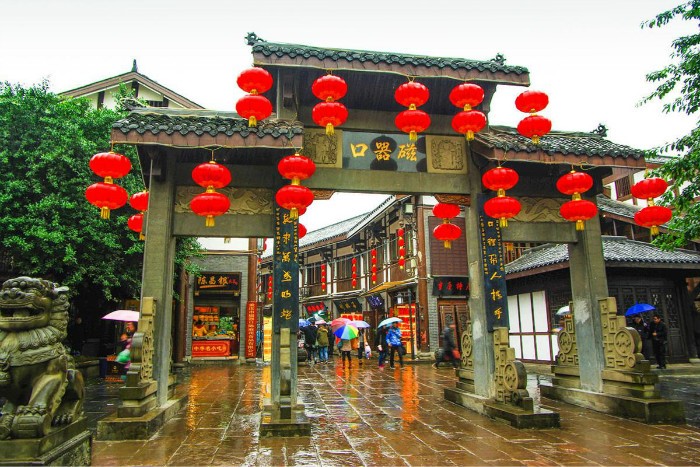Located on the Banks of the jialing river, not far from its confluence with the Yangtze river, is an ancient village called ciqikou, formerly known as longyin. Located in the western city of chongqing, it covers an area of about 291.6 acres (1.2 square kilometers) and is 9 miles (14 kilometers) long.
Chongqing itself has undergone many changes over the centuries that are not reflected in ciqikou, so the village gives an impression of what chongqing was like in the distant past. This fact was recognized by the state council and became a protected cultural site in 1998.

The history of ciqi can be traced back to more than 1,700 years ago. During the Ming and qing dynasties (1368-1911), it was famous for producing porcelain. So far, more than 20 ancient kiln sites have been found there. Because of the importance of the porcelain industry, its name has been changed from long Yin to chi qi kou, which translates as porcelain village. In addition, the fact that the village is an important shipping depot explains why so many shops line the 12-lane route, paved with their flagstones, forming the main route. Here, you’ll find many outlets for crafts, groceries, and more, as well as watchmakers, photographic equipment, pharmacies, and enticing roasted nuts and seeds. As one might expect, there are also teahouses and restaurants catering to the many tourists who come to see a way of life that has been here for centuries.
Most of the houses on ciqikou street were built during the Ming and qing dynasties, when many of China’s architectural masterpieces were created. Most of the two – and three-story buildings are made of bamboo and wood. Black bricks and pillars set off the white walls, contrasting with cinnabar doors and latticed Windows. Black stone slabs and lanterns decorate the doors to complete the authentic and traditional exterior attributes. The quietly flowing jialing river, which has been the lifeblood of the village in people’s memory, flows past the village. Because it is the river that brings goods and people here, and local products to customers both at home and abroad.
Three of the village’s most striking attractions are the tea bar, the artist’s studio and the shu embroidery workshop. Surprisingly, there are more than 100 tea bars, each with its own unique characteristics. Here, friends like to chat or have meetings to discuss business. Therefore, the tea bar offers you the opportunity to meet the local people and familiarize you with the unique folk opera.
The studio, where you can see the work of local artists, will be very interesting. It is said that the more beautiful a place is, the more artists it attracts. You must be surprised by the quality and progress of the work on display, as many artists document the local scene with skill and dedication. With so many artists working in the magnetic seven, you’ll be spoilt when you’re looking for souvenirs to visit.
Leave a Reply